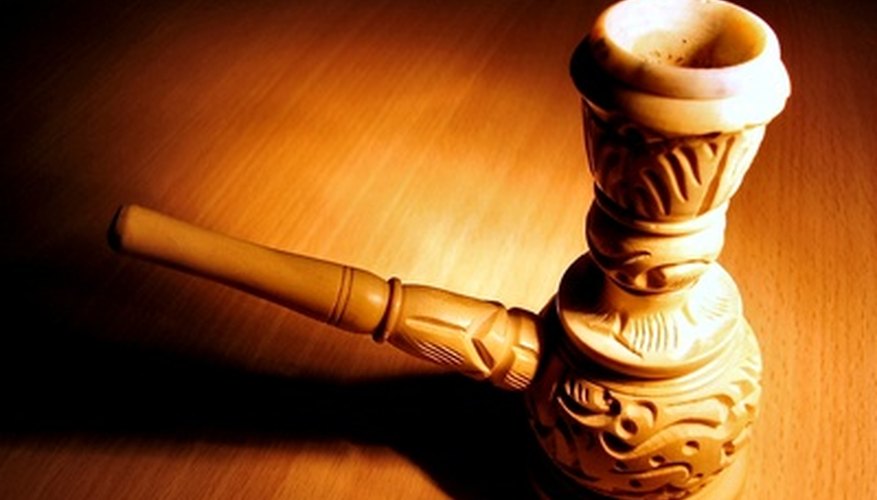Clay pipes have been used for hundreds of years as a cheap and accessible way to smoke tobacco. From the 1500s and the export of tobacco from the New World to Europe to the introduction of Brier pipes in the late 1800s, clay pipes were the most widely used pipes in North America and Europe. While easy to manufacture, clay pipes were also very fragile. Over the past 500 years clay pipes have become more elaborate, featuring faces, animals and even sports scenes. The fragile clay can become chipped and cracked, but it can be repaired with common moulding clay.
- Clay pipes have been used for hundreds of years as a cheap and accessible way to smoke tobacco.
- The fragile clay can become chipped and cracked, but it can be repaired with common moulding clay.
Clean the pipe thoroughly with pipe cleaners of any excess tobacco and dirt, particularly around the broken area. Study the design of the pipe and determine how the repairs may affect the pipe's smokability. For example, if it is a portrait pipe of someone's face, a replacement nose will generally not affect its smokability. However, if there is a large crack or hole in the bowl of the pipe, the smokability may be greatly diminished even if it is repaired. Extensive damage such as this may require sealing the crack on the outside and inside of the bowl.
Place the broken pipe in a small bowl of sand with the broken area entirely exposed. The sand will hold the pipe steady while you make the repairs. If the area to be repaired is too large to use this method, pipe clamps or other things can be used to hold the pipe in place.
Mold the self-hardening clay (of a shade similar to the original pipe) into the missing shape and attach it to the pipe. If repairing a hole on the stem, fill the hole as much as possible with clay without pushing it into the stem. If repairing a hole on the pipe bowl, smooth out the clay on both the inside and outside of the bowl to create an airtight seal. If the clay is cracked, create a "patch" that seals the crack by smoothing the clay over the cracked area.
- Place the broken pipe in a small bowl of sand with the broken area entirely exposed.
- If repairing a hole on the stem, fill the hole as much as possible with clay without pushing it into the stem.
Allow the clay to dry as directed on the package. Drying times for self-hardening clay are dependent on the temperature and humidity of the drying room.
Paint the repaired area of the pipe to match the style of the rest of the pipe with acrylic paint using a colour that matches that of the original pipe colour. Note that not all clay pipes are painted or glazed, so this step can be skipped if painting is not needed.
WARNING
Smoking causes cancer.
